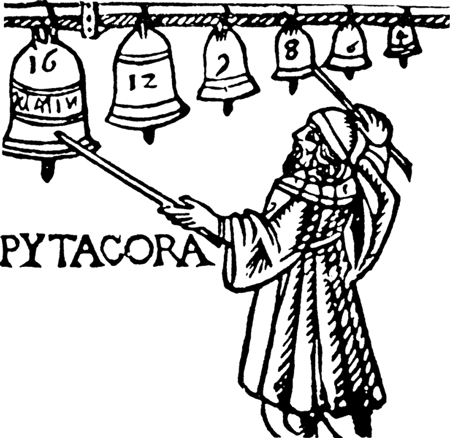 Pythagoras
(6th century BC) noticed a connection between numbers and music:
Pythagoras
(6th century BC) noticed a connection between numbers and music:Where is the wise man? Where is the scholar? Where is the philosopher of this age? Has not God made foolish the wisdom of the world? For since in the wisdom of God the world through its wisdom did not know him, God was pleased through the foolishness of what was preached to save those who believe. Jews demand miraculous signs and Greeks look for wisdom, but we preach Christ crucified: a stumbling block to Jews and foolishness to Gentiles, but to those whom God has called, both Jews and Greeks, Christ the power of God and the wisdom of God. For the foolishness of God is wiser than man's wisdom, and the weakness of God is stronger than man's strength.
-- 1 Corinthians: 20-25 (NIV)
Or, as Paul (MR) paraphrases it: "Greeks look for patterns"
 Pythagoras
(6th century BC) noticed a connection between numbers and music:
Pythagoras
(6th century BC) noticed a connection between numbers and music:
Ratio of string lengths of 1:2 $\rightarrow$ interval of precisely 1 octave.
Ratio of string lengths 0f 2:3 $\rightarrow$ interval of precisely 1 fifth
Patterns--simple patterns
Bring Viola
And his followers had a great reverence for the integer numbers {1, 2, 3, 4, ....}.
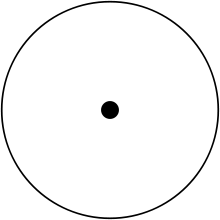 The
representation of one, the monad, was a circle, a geometrical figure with one
side.
The
representation of one, the monad, was a circle, a geometrical figure with one
side.
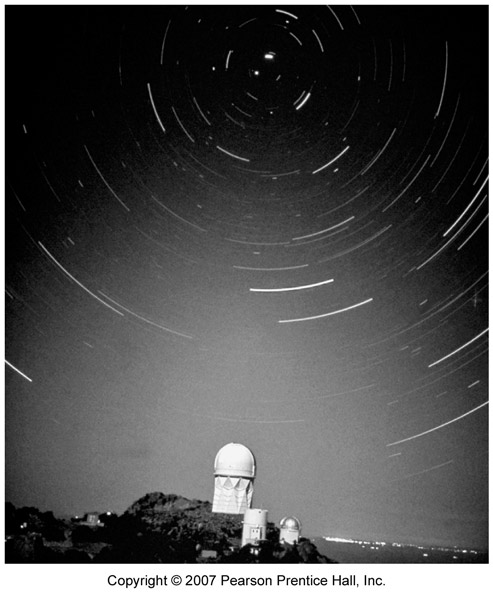 Leave a camera lens open long enough, and you'll see this pattern of star motion in the heavens above...
Leave a camera lens open long enough, and you'll see this pattern of star motion in the heavens above...
Which way are they moving?
[Writing - Rotating Stars]
With the naked eye you can watch the stars, and notice..."constellations".
 .
What is a constellation?
.
What is a constellation?
What happens as night progresses to the constellations? Are constellations just temporary? Do stars leave / enter a constellation? Let's see....
So what about that model of all the stars attached to a big crystal sphere?
Is the moon also part of a constellation?
What does it look like?
Video of 'moonrise'
Aside from the moon, there are 6 other objects that you can see with the naked eye that behave similarly...
It is important to remember that the planets do not appear to behave any differently from the stars on any given night. It is only when you watch them over the course of weeks or months that you might start to notice that they're not staying in any one constellation.
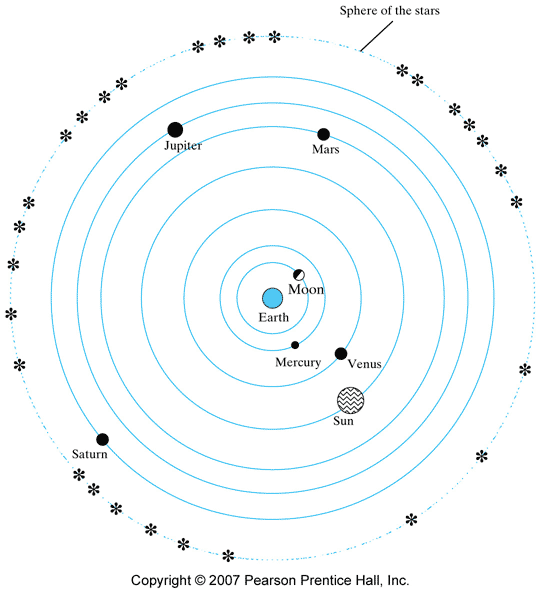 The ancient Greeks described the universe as a series of concentric shells centered on Earth.
The ancient Greeks described the universe as a series of concentric shells centered on Earth.
 Aristarchus (approx.
310 BC - 230 BC) proposed a sun-centered universe.
Aristarchus (approx.
310 BC - 230 BC) proposed a sun-centered universe.
Why do you think his model was not accepted at the time??
BTW, Aristarchus also successfully calculated the distance to the moon.

Unlike the sun and the moon which move uniformly (constant speed) relative to the 'background' of stars, the planets move erratically.
Their motion is now faster, now slower, and sometimes even backwards ('retrograde').
They also get brighter and dimmer.
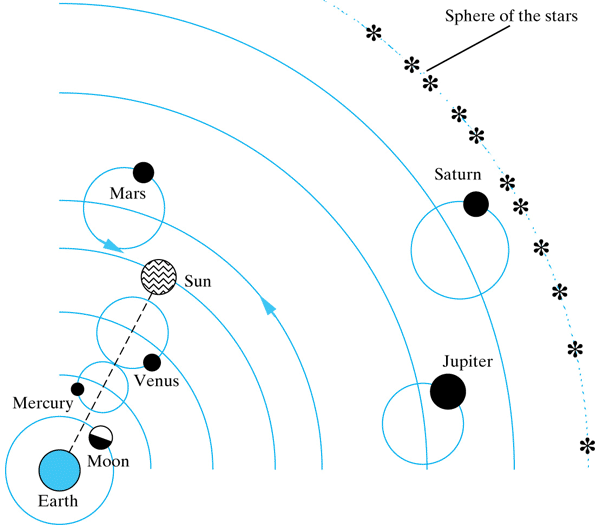 Ptolemy wrote up the prevailing Greek view in his Almagest (ca. 150
A.D.), which managed pretty good agreement with observations made at the time.
Ptolemy wrote up the prevailing Greek view in his Almagest (ca. 150
A.D.), which managed pretty good agreement with observations made at the time.
Telescopes were unknown until Galileo. The Greeks made measurements by sighting along rods.

 ...Such as Pythagoras, believed, for
aesthetic reasons, that circles and spheres were perfect forms, and that therefore the earth was most likely spherical.
...Such as Pythagoras, believed, for
aesthetic reasons, that circles and spheres were perfect forms, and that therefore the earth was most likely spherical.

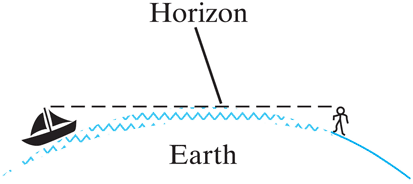
Aristotle travelled from Greece south to Egypt, and noted that different constellations could be seen, which could not be seen from Greece.
Demonstrate this with two student: Most of the class are the traditional constellations. As a student moves parallel to the front of the classroom (to simulate being on the flat earth).
The "new constellation" student is positioned slightly behind the moving student, and cannot be seen for parallel motion. But if the student pivots while moving...
Conceptual Exercises (CE) in Chapter 1: 1, 4, 6
Concept Checks in Chapter 1: 1-6, using this picture for #5 and #6.